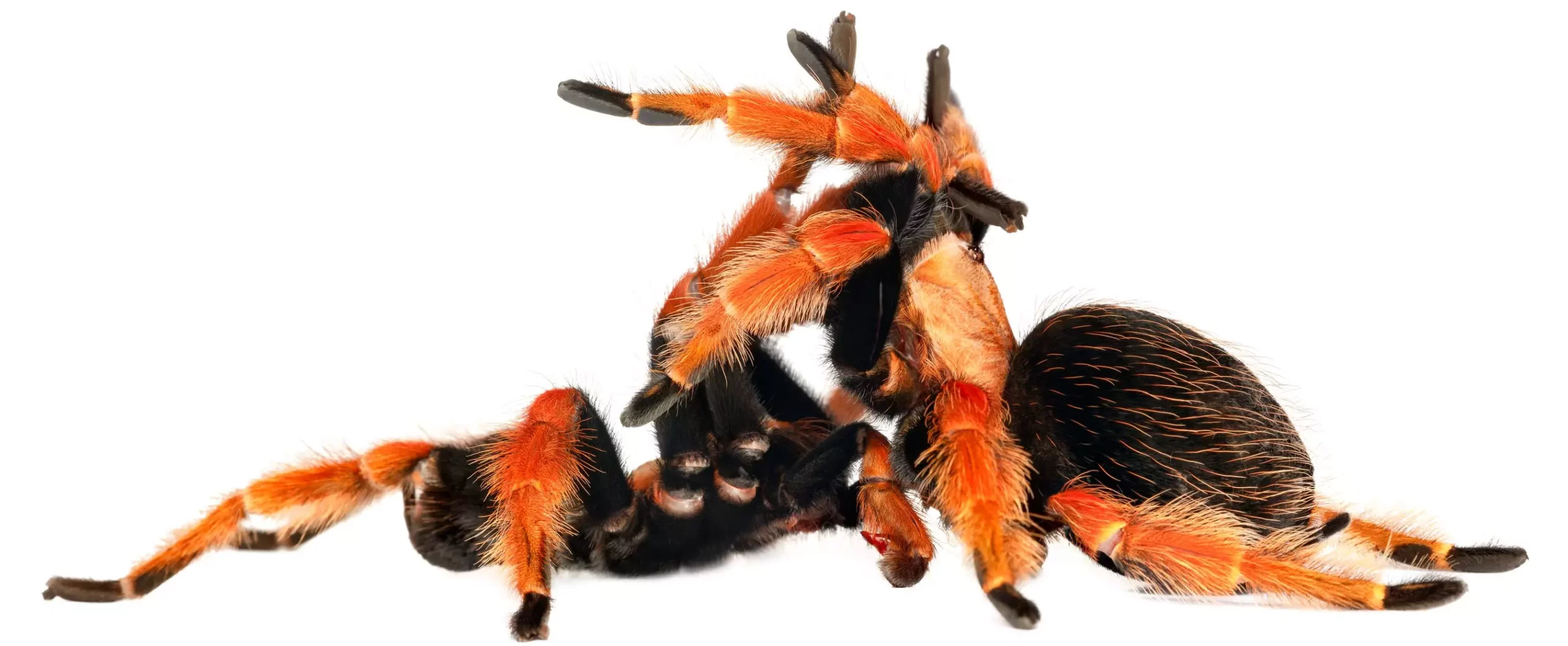Tarantulas, with their often-overlooked grace and intricate natural behaviors, have become increasingly popular as pets. Among the approximately 850 different species, a select few have captivated the hearts of many arachnid collectors. While owning a single tarantula can be a rewarding experience, the desire to breed these magnificent creatures often emerges. To ensure the success of breeding endeavors and to provide adequate care for both current and future spider companions, it’s crucial to understand the mating behaviors and reproductive needs of tarantulas.
Breeding tarantulas is not a spontaneous or trivial decision; it requires a deep understanding of their unique mating habits. Typically, tarantulas are solitary creatures that lean toward cannibalism, particularly between males and females. It is strongly advised not to house a male and female tarantula together indefinitely, as this can lead to unnecessary aggression and potential harm. Instead, successful breeding often involves a more structured approach where the male is introduced into the female’s space for a limited period, allowing them to familiarize themselves without direct contact.
Before any breeding attempts, it’s vital that the female has a secure and comfortable environment which includes adequate burrowing space. The construction of a burrow is a critical signpost in preparation for mating. Additionally, ensuring the female is well-fed will mitigate her hunger-driven aggression towards the male once they are in close proximity. The nuance of timing and environment significantly dictates the success of the mating process.
Once conditions are perfect, the female’s receptiveness to the male’s advances becomes the deciding factor for a successful mating encounter. If the female is uninterested, attempts to enforce mating can provoke unnecessary stress or danger. Thus, patience is key. After the mating occurs, it is essential to remove the male quickly to avoid aggression. This is where tools such as a paint stick come into play, serving as a gentle tool to separate them if needed.
It’s important to recognize that male tarantulas have a limited lifespan once they reach sexual maturity. Most species become sexually mature after several years but typically live only about one year after achieving maturity. This creates a unique urgency for breeders to ensure that they capitalize on the limited time available for mating.
Courtship in tarantulas is an intricate ballet that may not align with expectations. A mature male initiates the process by creating a silk web mat to deposit his seminal fluid, which he collects in specialized structures known as pedipalps. This courtship weaving is crucial, as it allows for the production of viable sperm.
When an appropriate female is located, the male transfers the sperm packet through the female’s opisthosoma, a specialized opening in her abdomen. Following this rather swift exchange, the male typically vacates the area promptly to avoid the female’s potentially aggressive reactions, highlighting the ever-present danger inherent in tarantula interactions.
After mating, females typically lay fertilized eggs weeks or even months later, depending on the species. Each egg sac can vary significantly in size, with some species producing up to 1,000 eggs, while others may only yield around 50. This variability indicates that breeding tarantulas is not for the casual hobbyist hoping for just a couple of new pets; preparation, space, and a commitment to care are necessary.
In the case of species like the Mexican Red-Knee tarantula, fertilized eggs hatch roughly three months after being laid, resulting in a collection of 200 to 400 spiderlings. These tiny creatures will undergo multiple molting phases within their first year, and the survival rate hinges on the quality of care provided by their keeper.
Some breeders opt to remove the egg sac from the mother’s custody to prevent her from exhibiting cannibalistic behavior towards her young after they hatch. However, that decision carries its own set of responsibilities and risks. Issue arises with the need to maintain the correct environmental conditions for the eggs, which may require meticulous attention to heat and humidity.
Breeding tarantulas demands more than mere enthusiasm; it requires in-depth knowledge of their behaviors, biology, and specific environmental needs. By appreciating the complexities of their mating rituals and the delicate nature of their reproductive cycle, prospective tarantula breeders can foster a successful breeding program while ensuring that their pets lead healthy, enriched lives. This journey can be immensely rewarding for both the breeder and the remarkable creatures in their care, but it must be approached with respect for the natural instincts and needs of these fascinating arachnids.


Leave a Reply